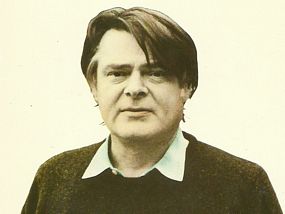 Simon Gray was a prolific playwright, novelist, and screenwriter of dark comedies, who seemed to thrive off professional and personal conflict and had a marked penchant for cigarettes and drink.
Simon Gray was a prolific playwright, novelist, and screenwriter of dark comedies, who seemed to thrive off professional and personal conflict and had a marked penchant for cigarettes and drink.
A doctor’s son, Simon James Holliday Gray was born on October 21, 1936. During the Second World War he was evacuated to Canada and afterwards attended Westminster School and Trinity College, Cambridge.
“I was brought up in the ’50s,” said Gray. “Probably the only courteous decade in the history of this country.” He loathed “the bestiality of some parts of English life” and bemoaned piped music and the “politicised and timid” way in which English had come to be taught. He never drove and wrote on an old Olympic typewriter.
In 1965 Gray was appointed a lecturer in English at Queen Mary’s College. He published four novels under his own name; Colmain (1963), Simple People (1965), Little Portia (1967) and Breaking Hearts (1997). He also wrote A Comeback for Stark (1968) as Hamish Reade. His first effort at drama was an adaptation for television of a short story, Death of a Teddy-Bear.
His first major success was Butley, about a university professor. The lead was played by Alan Bates, who starred in many of Gray’s plays.
Gray had numerous West End hits, including Butley (1971), Otherwise Engaged (1975), Quartermaine’s Terms, (1981), Melon (1987), The Common Pursuit (first produced in 1984 and revived in 1988), Hidden Laughter (1990), The Late Middle Classes (1999), Japes (2000), The Holy Terror (2004) and, on the radio earlier this year, Missing Dates, a sequel to Japes.
He also wrote a half-dozen plays for television, including After Pilkington (1987) and Running Late (1992), several plays for radio, and four early sets of journals; An Unnatural Pursuit and Other Pieces (1985); How’s That For Telling ’Em, Fat Lady (1988); and Fat Chance (1995).
The Smoking Diaries (2004), The Year of the Jouncer (2006) and The Last Cigarette, published earlier this year, won wide praise both for Gray’s wit and charm and for his objections to the “barbarism” of modern Britain.
Despite his numerous successes, Gray was a self-confessed paranoiac and struck an Eeyorish pose most of his working life. Seen through his bile-coloured eyes, the world, the flesh, and the Devil all conspired to thwart him, often in league with his colleagues. He had public spats with, among others, the critic James Fenton and the actor Stephen Fry, and a falling-out with his old friend Harold Pinter.
Most of his characters were drawn from the small, introverted milieu of academe and the media. Many of them were haunted by the happiness – or horror – of childhood and school which had turned them into frigid adults in unhappy marriages.
Among the most tragic of Gray’s creations was Simon Hench, the protagonist of Otherwise Engaged, who spends the play trying to listen to his new recording of Parsifal while his domestic world crumbles about him. Eventually he switches off a recorded telephone message of a man threatening to kill himself. Gray described Hench as a man who tries to deal with the world by pretending it doesn’t exist. He both “respected and despised” this attitude.
Much of his work was filled with disgust for the betrayals of contemporary middle-class life. Disappointment in marriage was contrasted with enduring – sometimes passionate – friendships between men. Happiest were those too old to be troubled by desire, like his schoolmaster Quartermaine. Some characters escaped into drink, some into purgative madness.
In mining his own neuroses for his work, Gray was prone to lash out. His journals were unsparing, mocking the American actors in his Broadway production of The Common Pursuit and portraying Jules Styne, with whom he collaborated on an unproduced musical version of The Red Shoes, as a whimsical megalomaniac surrounded by sycophants. His last books unstintingly examined his terminal lung cancer.
Simon Gray married, first, Beryl Kevern; they had a son and a daughter. After 25 years, the marriage was dissolved. He married, secondly, Victoria Rothschild. He smoked to the end, though he cut down a bit, and switched to Silk Cut. He died August 7, 2008 at the age of 71.